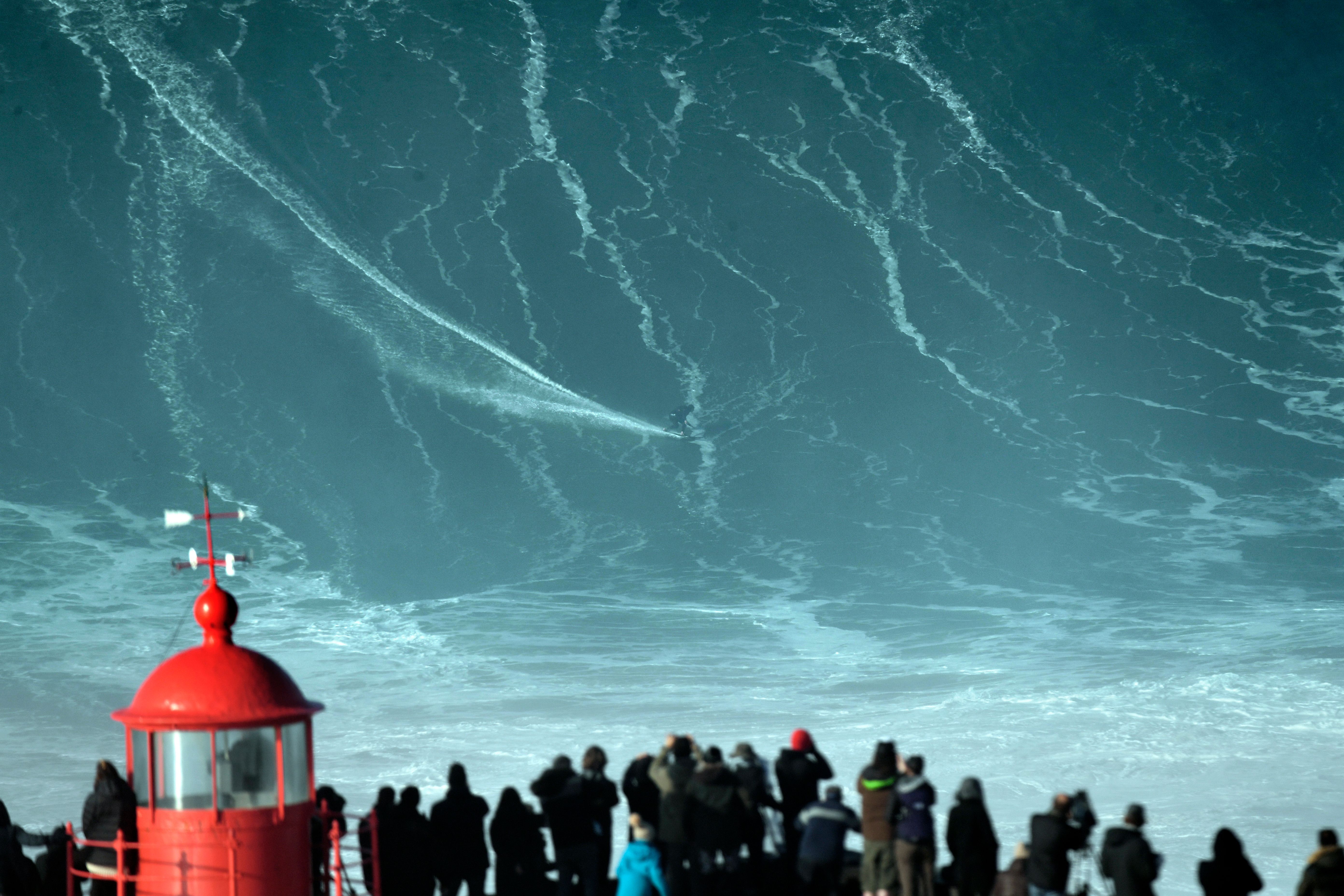Surfer's Monster, 80-Foot Wave Came from a Hidden, Underwater Canyon

An astonishing video that circulated on Twitter yesterday (Aug. 13) shows a surreal and stomach-dropping scene: An azure wave, streaked with vertical white lines, rises up and up — and, somehow — up higher, until it dwarfs a red tower and row of silhouetted onlookers in the foreground. Another line appears, the wake of a figure at first too small to see, slashing across the growing mountain of water. As the wave finally rolls over itself and breaks toward shore, the figure resolves for the camera lens: Brazilian surfer Rodrigo Koxa, appearing impossibly calm as he rides down the face of this liquid avalanche. The behemoth, which Koxa surfed in November 2017, is considered the biggest wave ever ridden, topping out at 80 feet (24 meters) off the coast of Nazaré, Portugal.
This is a wildly impressive feat by Koxa. But how was it possible at all? If you're a regular beachgoer along most shorelines, you might spot the occasional large wave — but it's a good bet that even most hard-core surfers have never seen an 80-footer. So how did Koxa know where to go to conquer such a mammoth wave? And why did an 80-foot wave roll into Nazare and not, say, Coney Island? [Six Bizarre Feeding Tactics from the Depths of Our Oceans]
Here's the thing: Koxa, besides being super-talented, got super lucky.
Sharon Gilman, a biological oceanographer at Coastal Carolina University in South Carolina, wrote on her website about some features of wind-driven waves— the most common sort of wave, and the kind Koxa rode in Portugal — that make them extraordinarily difficult to track and predict.
"There are waves of all sizes and shapes rolling into the beach at any given time," she wrote. "If they’re not stopped by anything, waves can travel across entire ocean basins … so the waves at your beach might be from a storm half a world away."
Koxa didn't make that 80-foot wave appear under his surfboard; he was fortunate to be in the right place at the right time.
But while there was some luck involved in Koxa's 80-footer, Koxa had good reason to suspect Nazaré might offer some prime surfing opportunities.
Sign up for the Live Science daily newsletter now
Get the world’s most fascinating discoveries delivered straight to your inbox.
Not every beach is created equal, Gilman said. The underwater terrain leading up to a beach plays a big role in what sort of waves roll onto shore.
Certain shorelines have shallow, open shorelines, she wrote. They don't do much to shape incoming waves' energy, so the waves just roll in one at a time, resulting in a calm surface for the water. (Think of any beach where you can walk dozens of feet into the water and still have gentle waves lapping against your belly.)
Other shorelines act like amplifiers. They might have steeper sea bottoms, which can cause waves to climb on one another's shoulders as they approach the beach, she wrote.
"The ones in front start really getting dragged by the bottom and so they slow down," she wrote. "This allows the ones behind them to ride up their backs. As the distance between the rows of waves decreases, all that wave energy gets condensed into a narrower and narrower space and has to go somewhere, so the wave gets taller."
At a certain point, as this website from the University of Hawaii explains, the back of a wave outpaces the front of the wave, causing it to "break" — effectively tripping over itself.
High walls, like those around a canyon, along a shoreline can also amplify ripples into monsters, she wrote. Waves crash into them and then bounce off, moving in different directions than the waves around them. If that wave peaks or reaches its low point as it runs into an incoming wave, that incoming wave will briefly gain the energy of the reflected wave — boosting itself in a process known as "constructive interference."
Nazaré, NPR reported in 2013, features both an intense upward slope toward shore and huge, constructive-interference-generating underwater walls — extreme versions of both amplifying effects that make it one of the top sites for monster waves in the world. Nazaré Canyon, a deep gorge off the coast, sinks to about 16,000 feet (nearly 4,900 meters) below the ocean's surface and blasts waves toward the surface.
That's why the previous record-breaking wave, a 78-footer, was also surfed off the coast of Nazaré. The canyon's waves have proved dangerous, injuring or nearly killing both surfers and beachgoers on several occasions. Waves topping 100 feet have been spotted offshore, according to NPR's report.
Still, as long as that hidden canyon continues to fire gobsmacking waves toward the ocean surface, it's hard to imagine that thrill-seeking surfers will stay away.
Originally published on Live Science.










